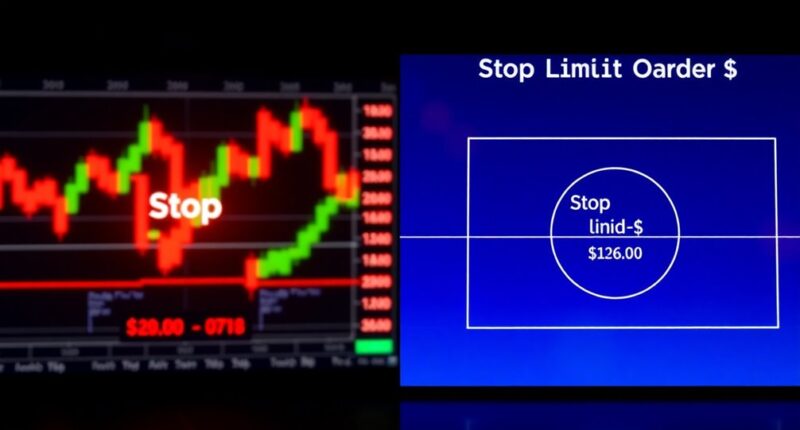Stop orders and stop limit orders serve different purposes in crypto trading. A stop order automatically triggers a market order once your specified price is reached, helping protect against losses but can lead to slippage in volatile markets. On the other hand, a stop limit order activates a limit order at your set price, ensuring you control the execution price. However, this means it might not execute if the market doesn't meet your limit. Understanding these differences is crucial for maximizing your trading effectiveness. Keep going to explore how each order type can fit your trading strategy.
Key Takeaways
- Stop orders execute immediately at market price once the stop price is reached, while stop limit orders only execute at a specified limit price or better.
- Stop orders are beneficial for quick risk management but can suffer from slippage in volatile markets, leading to unfavorable execution prices.
- Stop limit orders provide more control over execution prices, reducing the risk of slippage, but may not execute if the limit price is not reached.
- Market conditions and volatility significantly influence the effectiveness of both order types, impacting execution and potential profits.
- Traders often combine stop orders with technical analysis to enhance timing and optimize strategies amidst market fluctuations.
Order Types Overview

In the world of crypto trading, understanding different order types is crucial for effective decision-making.
You'll encounter market orders, which execute immediately at the best available price, ensuring speed but lacking price precision. Market orders are particularly useful in low volatility conditions or during strong trends when immediate execution is desired.
Limit orders, on the other hand, let you specify a price before buying or selling, giving you control over your trades.
For risk management, stop orders automatically trigger a market order when a price point is reached, while stop limit orders combine this function with a set price limit.
Lastly, One-Cancels-the-Other (OCO) orders allow you to place two orders simultaneously, canceling one when the other gets filled.
Knowing these order types empowers you to tailor your trading strategies effectively.
Order Execution Mechanics Explained
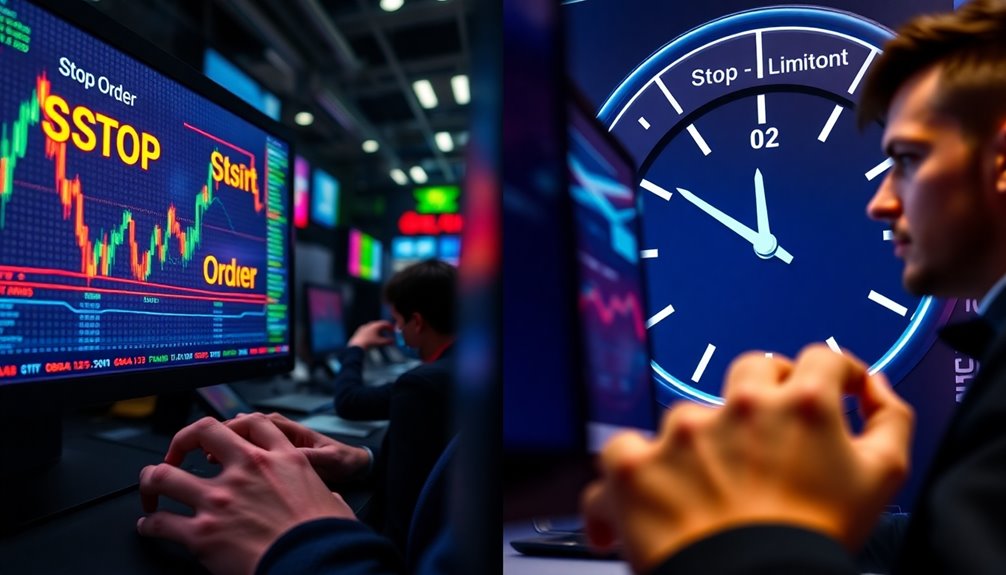
Understanding order execution mechanics is vital for navigating the complexities of crypto trading effectively.
You'll encounter various execution types, such as market orders that fill instantly at current prices and limit orders that wait for a specific price.
Stop orders trigger market orders once a price is reached, while stop-limit orders combine both concepts. The key difference is that stop-loss orders guarantee execution, whereas stop-limit orders ensure a specific price but may not execute in volatile conditions.
The order matching process relies on an order book, ensuring trades occur at the best price available. The order book lists all buy and sell orders for a particular asset, allowing market participants to see current demand and supply. Understanding order book mechanics is crucial for traders, as it helps them make informed decisions about their entry and exit points in the market. By analyzing the depth of the order book, traders can gauge market sentiment and potential price movements.
Execution algorithms like Price-Time Priority (PTP) and First In First Out (FIFO) play a key role in matching orders efficiently.
Additionally, liquidity affects your execution quality, with highly liquid markets providing better prices and quicker fills, which is essential for successful trading strategies.
Order Triggers and Conditions
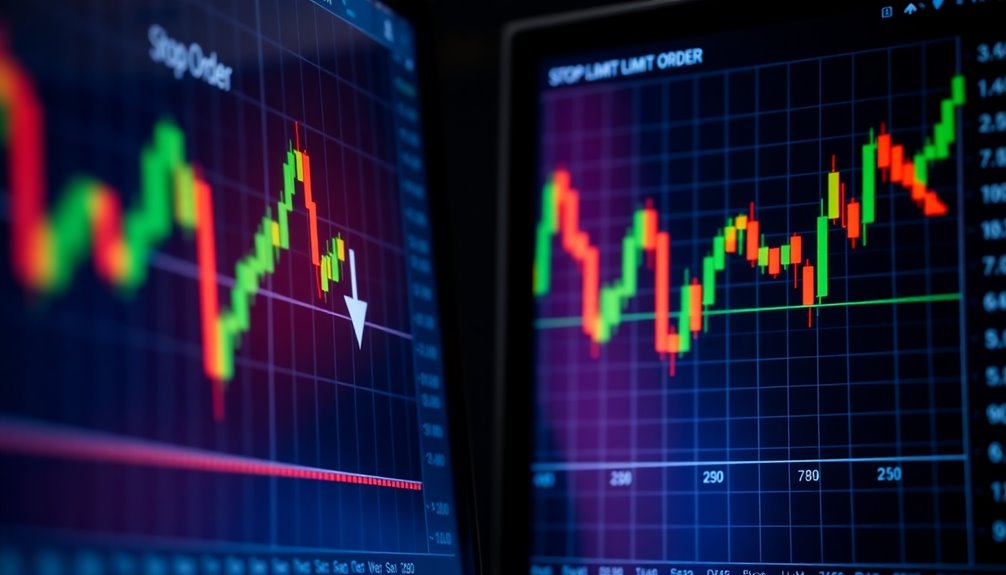
When navigating the complexities of stop-limit orders, it's crucial to grasp the roles of order triggers and conditions.
The stop price acts as your activation point, making the order active when the market hits that price. For instance, if you set a buy stop-limit order at $2,000, it triggers once the market price reaches that level. However, remember that a price gap can prevent execution.
Once triggered, the limit price comes into play, ensuring your trade executes only if the market meets or exceeds it. This combination of stop and limit prices allows you to manage risk effectively, offering control over your trades in volatile markets while automating the process for efficiency. Additionally, it's important to be aware of minimum and maximum order amounts for each trading pair, as these can affect your overall strategy.
Pros and Cons Analysis

While both stop orders and stop limit orders offer unique advantages in crypto trading, each comes with its own set of drawbacks that traders need to consider.
Stop orders provide effective risk management by automating trades and protecting against losses, but they also carry risks of slippage and false triggers. These factors can lead to trades executed at unfavorable prices, particularly in volatile markets. Additionally, market conditions can significantly influence the effectiveness of stop orders, potentially impacting their execution.
On the other hand, stop limit orders give you greater price control, helping you avoid unfavorable execution. However, they can be complex and mightn't execute if the market moves unfavorably.
Additionally, in less liquid markets, there's a risk that your order won't fill at all. Balancing these pros and cons is crucial for effective trading strategies.
Stop Orders vs. Stop Limits

In crypto trading, knowing the difference between stop orders and stop limit orders can significantly impact your trading strategy.
Stop orders trigger a market order when your designated price is hit, guaranteeing execution but possibly at an unfavorable price. On the other hand, stop limit orders activate a limit order once the stop price is reached, giving you control over the execution price but without a guarantee that the order will be filled. Understanding when to use stop and limit orders can help you optimize your trading strategies based on market conditions.
While stop orders help mitigate risk by ensuring immediate market entry, stop limit orders allow you to set a specific price point.
Understanding these differences can help you make informed decisions, manage your risks, and optimize your trades in the volatile crypto market.
Market Volatility Impacts Effectiveness
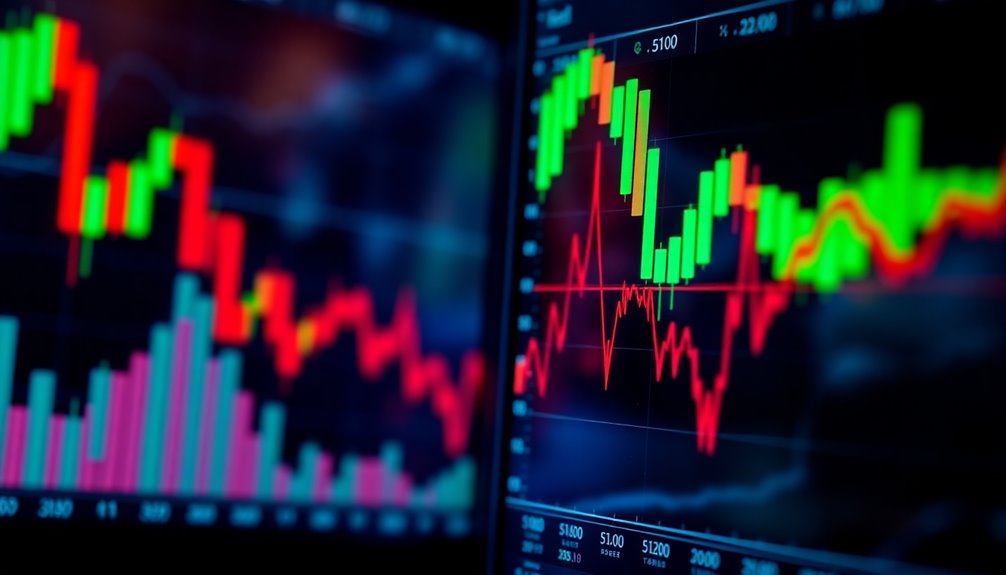
Market volatility significantly affects the effectiveness of both stop orders and stop limit orders in crypto trading.
With stop orders, you can manage risk by automatically triggering a market order, but be cautious—unfavorable execution prices can occur due to slippage, especially in volatile conditions. Minor price fluctuations may also trigger your stop orders prematurely. To mitigate the risks associated with market fluctuations, consider diversifying your portfolio to enhance overall stability.
On the other hand, stop limit orders give you more control over execution prices, preventing slippage and ensuring trades execute at your specified limit. However, they carry the risk of non-execution if the market doesn't reach your limit.
Algorithmic Trading Adoption Rates

How has algorithmic trading transformed the landscape of crypto trading? It's reshaping how you approach the market by offering automation and efficiency.
With the global algorithmic trading market expected to grow at a CAGR of 12.9%, the cryptocurrency segment is notably thriving, driven by increased interest and advanced trading solutions. This growth is significantly influenced by the increasing adoption of algorithmic trading among hedge funds and institutional investors.
North America leads this growth, thanks to institutional investors and tech companies pushing for better trading strategies.
You can leverage AI and machine learning technologies to craft sophisticated algorithms that analyze real-time data and execute trades faster than ever.
As access to user-friendly platforms expands, retail investors like you can easily adopt these tools, enhancing your trading experience and participation in the crypto markets.
Utilize Trailing Stop Orders
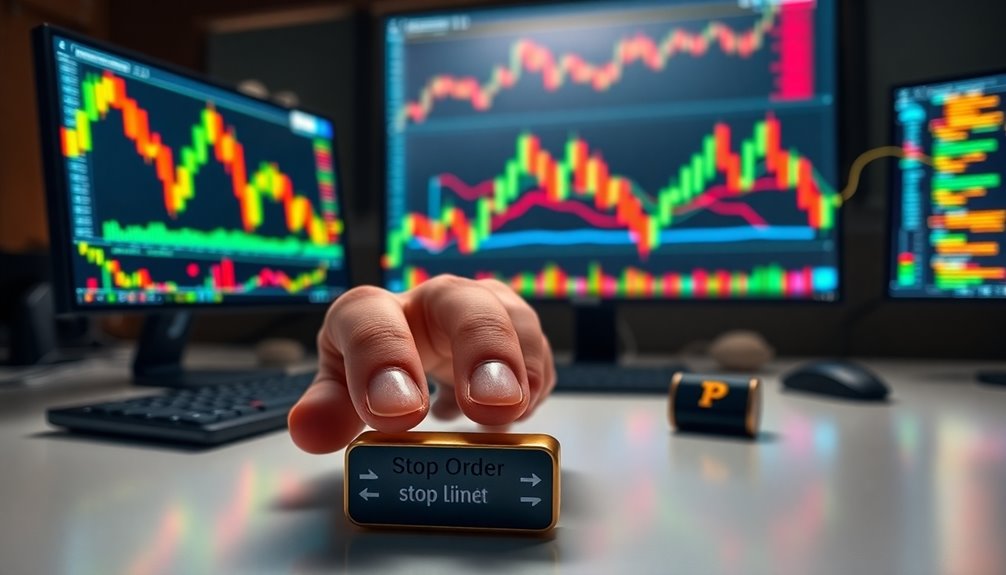
Algorithmic trading tools have opened up new avenues for managing your investments, and one powerful strategy to consider is utilizing trailing stop orders.
These orders dynamically adjust with market prices, minimizing potential losses while protecting your gains. By setting a stop threshold that trails the market at a specified distance, you can lock in profits as the market rises. This approach is especially useful for traders looking to leverage trailing stop loss features that secure profits during market fluctuations.
If the price drops to your stop threshold, the order executes a market or limit order. This strategy helps you manage risk and reduces emotional decision-making.
However, be cautious of market gaps and execution delays, as they can impact your trades. Combining trailing stop orders with other strategies can further optimize your trading outcomes.
Frequently Asked Questions
Can I Cancel a Stop Order After Placing It?
Yes, you can cancel a stop order after placing it. Just log in to your trading platform, find the section for your open orders, and look for the option to cancel.
This process varies slightly by exchange, so make sure you're familiar with the specific steps for the platform you're using.
How Do Fees Differ Between Stop and Stop Limit Orders?
Ever wondered how trading fees can impact your strategy?
Fees for stop and stop limit orders differ mainly in execution type.
Stop orders typically incur higher taker fees due to their instant nature, while stop limit orders can attract lower maker fees if they add liquidity.
Your choice between them can affect your costs, so keep an eye on how these fees align with your trading goals and risk tolerance.
Are Stop Orders Available on All Cryptocurrency Exchanges?
Stop orders are widely available on most cryptocurrency exchanges.
When you trade, you'll find features like stop-loss and stop-buy orders on platforms like Binance, Coinbase Pro, and Phemex. These orders help you automatically execute trades when prices hit specific levels, aiding in risk management.
However, not all exchanges offer the same functionalities, so it's best to check the available options directly on your chosen platform before placing an order.
What Happens if the Market Is Closed When a Stop Order Triggers?
It's ironic how you can be ready to act when the market isn't even open. If a stop order triggers while the market's closed, it won't execute.
Instead, you're left waiting until the next session, hoping for the right price. You might consider using a limit order for more control, but remember, there's always a risk of slippage.
Can Stop Orders Be Used for Smaller Altcoins Effectively?
Yes, you can use stop orders for smaller altcoins, but their effectiveness varies. In low liquidity markets, prices can fluctuate rapidly, making it risky.
Whales might trigger your stop-loss orders, causing prices to drop suddenly. You should be cautious about slippage and market manipulation.
To manage risk, consider combining stop orders with other strategies and regularly review your positions. Being proactive can help you navigate the challenges of trading smaller altcoins successfully.
Conclusion
In the fast-paced world of crypto trading, understanding stop orders and stop limit orders can be your lifeline. Which would you choose when the market swings wildly, your heart racing as prices fluctuate? By weighing their pros and cons, you can navigate risks effectively and protect your investments. Whether you opt for a stop order for quick execution or a stop limit for price control, being informed empowers your trading strategy. Don't leave your future to chance!
